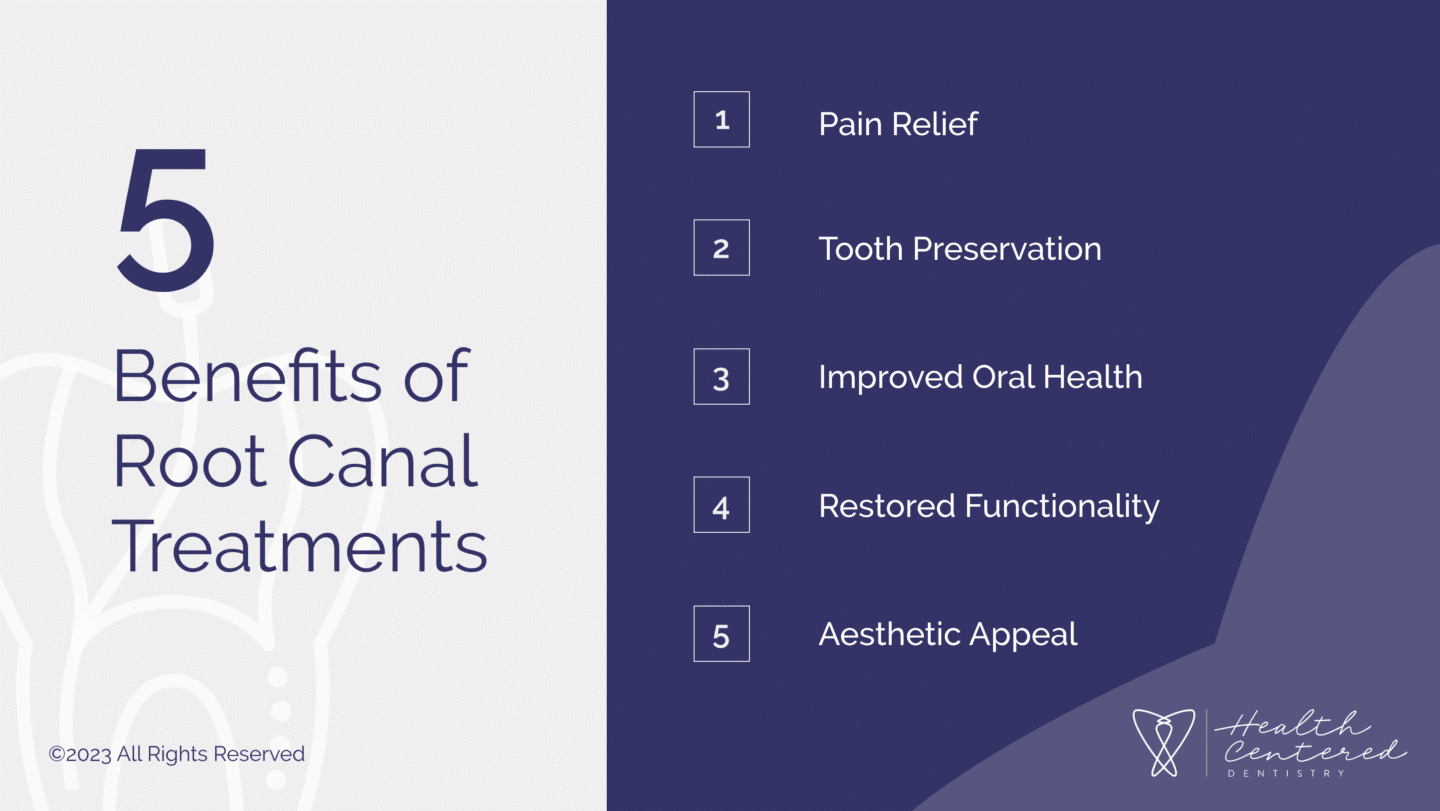Maintaining good oral health is crucial for a vibrant and pain-free smile. However, dental issues can arise, and when they do, it’s essential to seek appropriate treatment. One common dental health issue occurs when tooth roots become infected. And this can be quite painful. Thankfully, root canal treatments can help to alleviate pain and get you back on track with great oral health — and root canals are one of the most common treatments provided by a dentist.
It’s also important to note that keeping up with your dental health is essential for overall health. This is why partnering with a holistic dentist in Anchorage is the best solution for treating any issues you may have, and for addressing any potential dental problems before they arise. As such, root canals are often preventative procedures that will ensure greater dental health in the future.
You probably have a few questions about root canals. For example, why might you need root canal treatment? Does the procedure hurt? Can an infection come back?
In this blog, we’ll provide an overview of root canal therapy and answer common FAQs on the procedure.
Are you considering root canal treatment in Anchorage? Contact Health Centered Dentistry today and get matched with a holistic dentist.
What is Root Canal Treatment?
Root canal treatment, also known as endodontic therapy, is a dental procedure designed to save an infected or damaged tooth. When the pulp — the soft tissue inside the tooth —becomes infected or inflamed due to decay, deep cavities, cracks, or trauma, it can lead to severe pain and sensitivity.
Though root canal treatment can be a painful procedure, the treatment addresses the aforementioned issues by removing the infected pulp, disinfecting the root canal system, and sealing it to prevent further infection which can lead to gum disease.
Benefits of Root Canal Treatments in Anchorage

It’s important to note that not all cases of tooth pain or sensitivity indicate the need for a root canal. And only a dental professional can accurately diagnose the underlying issue and determine if a root canal is necessary. But the good news is that with modern dental procedures and technology, a root canal can offer many benefits.
- Pain Relief: Root canal treatment alleviates severe toothache caused by infection or inflammation, providing immediate relief and restoring oral comfort.
- Tooth Preservation: By removing the infected pulp and sealing the root canals, the tooth is saved from extraction, preserving your natural smile and preventing adjacent teeth from shifting.
- Improved Oral Health: Root canal treatment eliminates infection, preventing it from spreading to other teeth or the jawbone, promoting better oral health and overall well-being.
- Restored Functionality: Treated teeth regain their normal function, allowing you to chew, bite, and speak without discomfort or limitations.
- Aesthetic Appeal: Restoring the tooth’s appearance with a dental crown enhances its aesthetics, giving you a confident and attractive smile.
8 Common Steps of a Root Canal Procedure
Like most dental treatments, root canal therapy involves several steps — from removing infected tissues surrounding the root to follow-up care. Like with all dental work, many patients want to know about the process. Here, we’ll outline how a typical root canal procedure unfolds.
- Evaluation and Diagnosis
A dentist examines your tooth using X-rays and performs a thorough evaluation to determine the need for root canal treatment. Symptoms such as intense toothache, sensitivity, swelling, or abscess formation may indicate the need for this procedure. - Anesthesia
A local anesthetic is typically administered to ensure a comfortable procedure. This numbs the tooth and the surrounding area, alleviating any pain or discomfort. - Accessing the Pulp Chamber
Your dentist will create a small access hole in the tooth’s crown using specialized dental instruments, typically a dental drill. This allows access to the pulp chamber and root canals. - Removing the Infected Pulp
Using dental files, a dentist carefully removes the infected or damaged pulp from the pulp chamber and root canals. The canals are then cleaned and shaped to facilitate proper disinfection. - Irrigation and Disinfection
The root canals are thoroughly irrigated with an antimicrobial solution to eliminate bacteria and disinfect the area. This step ensures the removal of any remaining infected tissue. - Filling the Root Canals
Once the canals are clean and dry, they are filled with a rubber-like material called gutta-percha. Combined with a sealer, gutta-percha fills and seals the canals, preventing reinfection. - Restoring the Tooth
Depending on the tooth’s condition, a temporary or permanent filling is placed in the access hole. In cases where significant tooth structure has been lost, a dental crown may be necessary to provide strength and protection. - Follow-up Care
After the procedure, the dentist may prescribe antibiotics and pain medication, if required. Follow-up appointments will be scheduled to monitor the healing process and determine the need for additional treatment.
How Do I Know if I Need Root Canal Work?
Determining whether you need root canal therapy is best done by a dental professional who can evaluate your specific dental condition. However, there are several signs and symptoms that may indicate the need for a root canal, and sometimes these can be considered a dental emergency — especially when you’re experiencing severe pain.
If you experience any of the following, it is important to schedule an appointment with your dentist for a proper diagnosis.
- Persistent or Severe Tooth Pain: If you have a consistent toothache or sharp pain that lingers, even after taking over-the-counter pain medication, it could be an indication of infected or inflamed pulp.
- Sensitivity to Hot or Cold Substances: Heightened temperature sensitivity to hot or cold, particularly if the sensitivity persists even after the hot or cold stimulus is removed, might suggest the need for a root canal.
- Gum Swelling or Tenderness: Swelling, tenderness, damaged tissue, or a pimple-like bump on the gum near the affected tooth may be a sign of infection within the root canal.
- Discoloration of the Tooth: A tooth that has darkened or changed color compared to the surrounding teeth could indicate that the pulp inside the tooth is damaged or dead.
- Persistent Bad Breath or Bad Taste: Persistent bad breath or a foul taste in the mouth, even after regular oral hygiene practices, may be due to an infection within the tooth.
- Cracked or Badly Damaged Teeth: If a tooth is badly decayed, cracked, fractured, or damaged due to trauma, it increases the risk of bacterial infection reaching the pulp, potentially necessitating a root canal.
Get Root Canal Treatment With Anchorage’s Premier Holistic Dentist
At Health Centered Dentistry, we take the time to thoroughly investigate your dental health needs during every check-up, and this is important for the early detection of dental issues. Whether you have missing teeth or need more serious treatment, you can rest assured your and your family’s oral health is in the best hands at HCD.
Our team at Health Centered Dentistry is ready to take care of you if you need a root canal. With our state-of-the-art dental technology and our expertise, we stand ready to take care of your dental health.
Ready to receive the best dental care in Anchorage? Schedule your first comprehensive check-up at Health Centered Dentistry!


